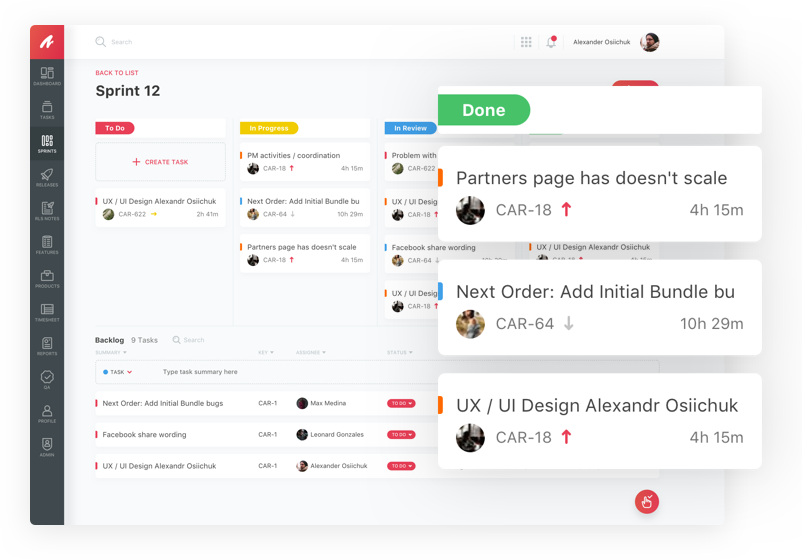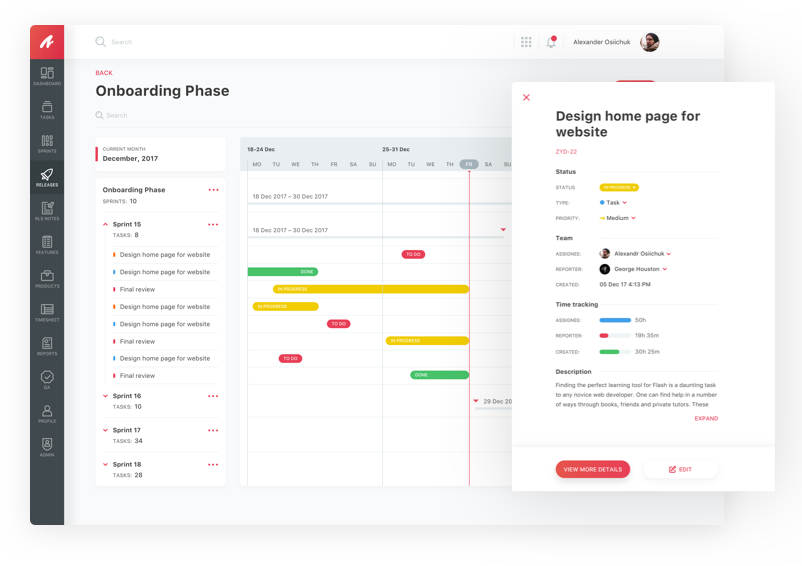
What’s New?
There are a wide range of project management methodologies and strategies available in today’s fast-paced market. Keeping up with those different strategies and matching them to your project management software can be an ongoing challenge. With Z-Stream, however, you have the option to tailor your project management software to your specific needs, whether you’re looking at:
1) Waterfall
2) Iterative
3) Spiral
4) V-shaped methodologies
5) The Agile family
6) and more
Z-Stream is, in fact, ideal for a number of project management approaches. With Z-Stream, you’re able to combine many of the advantages of the leading project methodologies, allowing you a more effective project management approach that will ultimately improve your projects and make it easier for you to accomplish your business’s goals. In particular, Z-Stream is known for its capability within Agile project management as it creates a highly effective platform for Agile project development teams.
Understanding Agile
Agile is more than just a software development practice. It’s a state of mind. Agility inspires rapid change and development, allowing teams to respond quickly to needed changes. Agile is designed to make life easier for those who use it, providing faster responses and deployments for all its users.
Based on innovative principles and practices, agile methodologies have greatly boosted the productivity and flexibility of IT teams. Most businesses now accept that they need high-quality software in order to help deliver an exceptional customer experience. Not surprisingly, Agile development is one of the most effective tools available for helping organizations meet those goals. The Agile manifesto is simple:
We are uncovering better ways of developing software by doing it and helping others do it. Through this work we have come to value:
1. Individuals and interactions over Processes and tools
2. Working software over Comprehensive documentation
3. Customer collaboration over Contract negotiation
4. Responding to change over Following a plan
That is, while there is value in the items on the right, we value the items on the left more.
Agile approach aims to make work simpler and smoother for their organizations, and, as a result, a variety of practices emerged that are designed to help better shape software development, including:
1. Simple design
2. A common work area
3. Collaboration over competition
4. Continuous integration
5. Regular planning meetings
6. Progress monitoring
7. Outcome review
8. Customer involvement
9. Frequent releases
10. Refactoring
11. Time boxing
Agile development has often been described as being similar to the waterfall method, which is a highly linear method that moves developers smoothly through the development process. Waterfall and Agile have the same basic components: conception followed by initiation, analysis, design, construction, testing, and ultimately deployment. In the waterfall method, however, developers move straight through these processes without pause or backtracking.
Agile, on the other hand, groups phases together. In many cases, two phases may occur at the same time, allowing for faster development and deployment. Agile development also makes it easier for developers to go back and make changes as needed. In the waterfall method, all requirements must be lined out at the start of the project, and any failures or flaws in those requirements can doom the entire project.
Scrum and other similar methods, including Lean, Kanban, Feature Driven Development, Extreme Programming, etc. share much of the same philosophy, characteristics and practices within the Agile methodologies family. As Agile expanded, its tenets, which began in software development, have grown to be used in other areas, as well. What was originally intended for IT has since spread to industrial science and a variety of other areas, making Agile a more critical integration in all areas of product development. Over time, Agile has become the yardstick by which most businesses, regardless of the industry or their final products, measure their successes.
How does Z-Stream work with Agile?
With Agile teams in mind—but not only for those teams—we have integrated a variety of features based on that common Agile philosophy that will make project management tasks easier. It doesn’t matter if your team uses Agile or not; these traits are designed to simplify project management for any team, regardless of what project management philosophy is used most commonly across the company.
Sprints
WAccording to Agile philosophy, a project consists exclusively of a sequence of iterations, which makes iterations (also known as sprints) a critical part of the process. In Agile, a sprint is a cycle during which development takes place. Typically, this timebox covers a one to four week time period, and is used to create a usable product increment by accomplishing all the Sprint backlog items according to a flexible plan. In Z-Stream, sprints are used to help keep track of your progress and how the project as a whole is moving. This includes tracking of time expected to be spent on a specific element of the project during this time, desired outcomes during this time period, and the process completed during this sprint. All the data is clearly organized and readily accessible in one location, which is of great benefit to many Agile teams.

Story Points
Before you can create your sprints, especially if you’re trying to create long-term goals, you need to estimate the amount of work needed for each task. Z-Stream has two formats of tracking time required for a task. The Estimate feature allows you to estimate the time that will be spent on a task. Story points are another method that is used by many agile teams. Story points are relative estimates of the amount of work spent on tasks: for example, a Fibonacci-like format: 1, 2, 3, 5, 8, 13, 21, 34.
According to Agile philosophy, story points are used to determine the effort necessary to complete specific facets of the story. They aren’t either goals or promises, but rather an estimate of how long specific aspects of the planning cycle will require. Story points integrate the amount of effort required to meet specific challenges with the complexity of the challenge, the unknown factors associated with it, and other factors that will help users deliver a clear estimate.
Story points and hourly estimation are excellent ways to determine approximately how long it will take to complete specific aspects of a project—and in Z-Stream, both of them are readily available. While estimates aren’t absolute, they can provide a better look at the amount of time really needed to accomplish product development goals.
Backlogs
In Z-Stream, backlogs are tasks that don’t have a relationship to any specific iteration—that is, tasks that don’t necessarily fit within a known sprint, but which must still be completed. Z-Stream makes it easy to create and monitor these tasks, which means that they are more likely to be completed within a reasonable time frame and be present in the final release of the product.
Releases
In Agile software development, a release is a complete deployable software package that is usually the culmination of several sprints. There may be numerous complete releases throughout the product development process. Gantt charts are often used to help organize sprints within releases, providing a clear visual image of what clients can expect to be completed, when they can expect its completion, and how its features will help them meet their goals.

Sprint Backlog
Z-Stream makes it easy to create and plan sprints ahead of time. The Sprint Backlog feature enables dev teams to organize a set of backlog items for the sprint and plan the delivery of functionality for the next increment. This way you can easily organize your team’s time and work to ensure realizing sprint goals.
With Z-Stream, the basic principles of Agile methodology were used to help design a project management tool that will make teams more efficient, more effective, and better organized. If your team doesn’t use Agile methods, however, that doesn’t mean that Z-Stream won’t work for you! In fact, Z-Stream is designed to provide flexible options that are cross-functional and easily adjusted to fit the needs of any team. Ready to give it a shot? Sign up today to learn more about how Z- Stream can work for your team.




